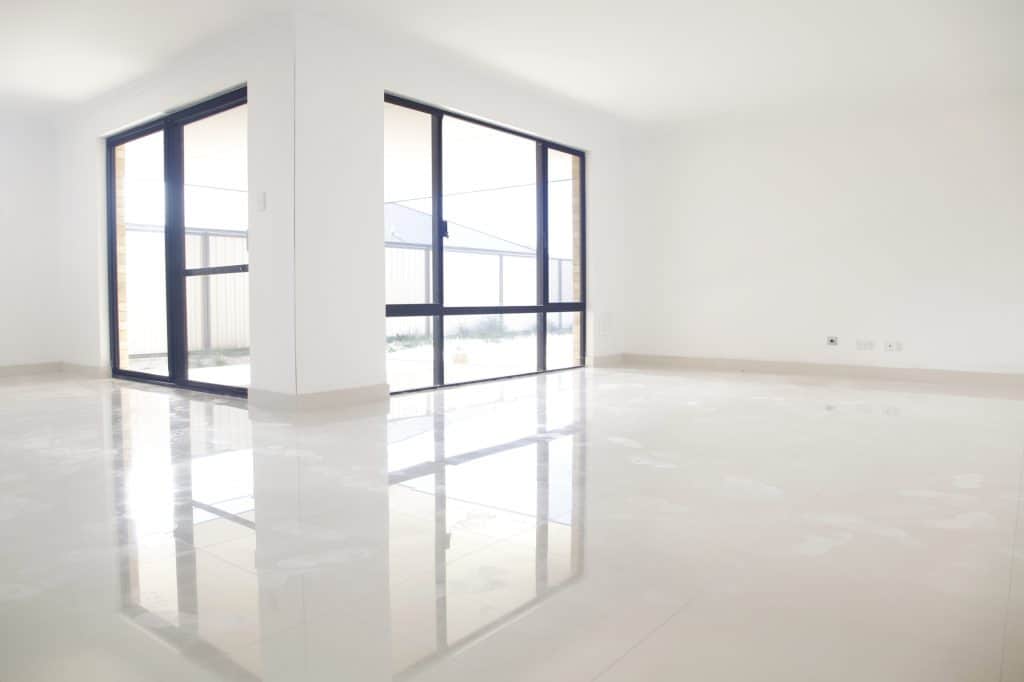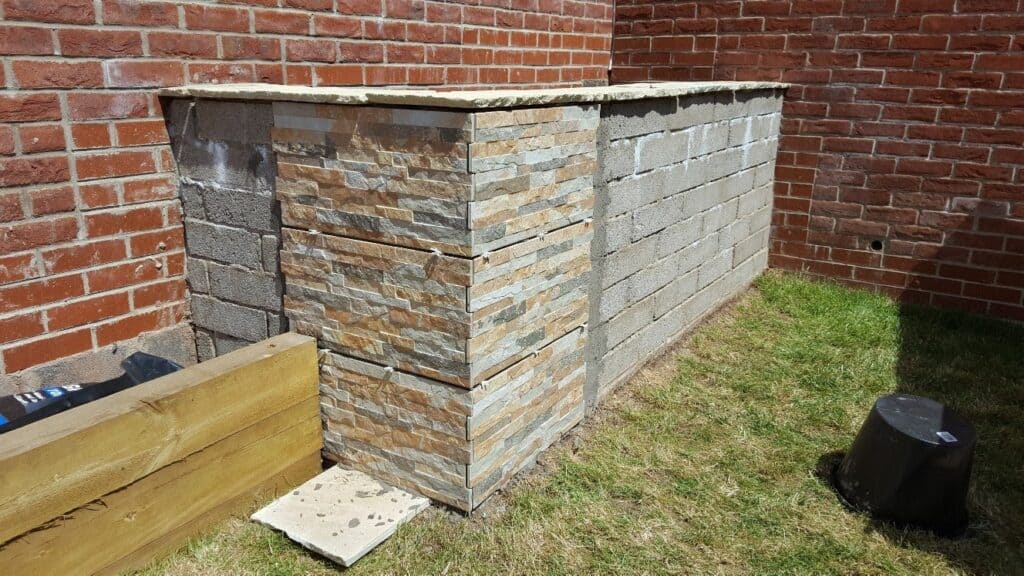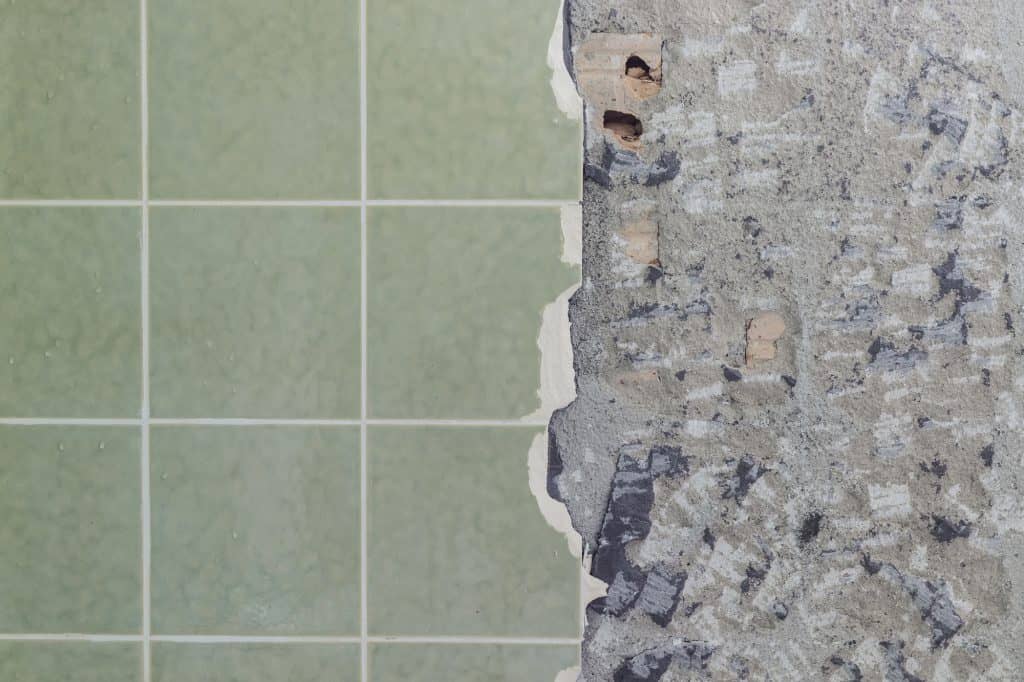Laying tiles is hard work, but getting them out to reuse takes things to an entirely new level. While it is common to smash the existing tiling out to start again, quality tiles like porcelain are costly, so you may wonder if it is worth trying to save them to reuse.
Porcelain tiles are extremely hard and brittle. They crack easily under any structural shifting. Successfully removing porcelain tile without breaking it depends on several factors. The most important is whether they were applied using mastic adhesive or mortar.
The most common reason to consider saving and reusing porcelain tile is to save money. Let’s examine whether it is worth the effort to try to lift the tile to reuse it.
Remove And Reuse: It Matters Whether It’s Porcelain Or Ceramic

Although porcelain is very durable, one flaw is that it is incredibly brittle, making getting them off intact very tricky. Lifting porcelain tile which has been laid to last a lifetime will be painstaking. Each one will need special attention to prevent it from breaking.
Before we move into whether or not it is worth trying to save and reuse your porcelain tile, it is important to understand the differences between ceramic and porcelain. These two types can be used for most of the same purposes, and consumers often use the words interchangeably.
Whether a tile is classified as ceramic or porcelain depends on some rather strict guidelines established by the Tile Council Of North America. In a nutshell, porcelain tile is denser and more water-resistant than ceramic tile.
Although porcelain and ceramic tiles are often indistinguishable in appearance, one notable difference is the price – among a few other differences.
Differences Between Porcelain & Ceramic Tile
Let’s look at the main differences between these two products and whether it is worth it to invest in porcelain tile if ceramic can do the same job.
| Ceramic Tile | Porcelain Tile |
| More susceptible to moisture, especially if unglazed | Very low water absorption rate. Less porous than ceramic |
| They may be unglazed and require regular maintenance to seal | Almost always has a thin glass glaze coating – often called vitreous tile |
| More likely to stain than porcelain | Stain-resistant |
| More budget-friendly than porcelain | Expensive compared to ceramic |
| It should not be used outside | Highly durable |
| Prone to cracking in cold temperatures but less likely to break from slight structural movement than porcelain | Prone to crack under structural shifting |
| Easier to install | May need professional installation |
| The top layer is a different color, so chips are more noticeable | Color is true throughout the entire tile. Chips are less likely to be visible |
| Usually, they are a solid color | It comes in variations and may be patterned to resemble natural stone or wood. |
Although ceramic tile is slightly less expensive than porcelain, it has a similar expected lifespan to porcelain if regularly sealed. So the choice of what tile to use indoors usually comes down to which pattern, color, or design you find most appealing for the space you have in mind.
How To Choose Whether To Remove & Reuse Porcelain Tiles

Your chances of removing porcelain or any other type of tile without breaking it will depend mainly on five factors:
- How is it attached? Removing any tile from a bed of mortar is going to be a headache. If the odds run in your favor and your tiles were set using mastic, your chance of removing most of your porcelain tiles without breaking them just improved dramatically.
- The tools you use to remove them. Using a jackhammer or a hammer with a giant chisel will definitely get your tiles out one way or another. However, they probably wouldn’t be good for anything except an artistic mosaic project when you’re done.
To remove brittle porcelain tiles without breaking them, you will need to be able to get under each one and lift it in one piece.
- How thick are the porcelain tiles? The thickness of the porcelain tile you are removing will make a difference. The thicker the tile, the more likely it is that you will be able to remove it to reuse.
- How big are the tiles? Bigger is not better if you need to remove porcelain tiles without breaking them. Tiny shower floor tiles will be a lot easier to lift out undamaged than large floor tiles.
- How much time do you have to complete the project? While deciding on a way forward, it is also important to be realistic. It may not be impossible to remove most of your porcelain tiles intact if you have unlimited time to drill away at the surrounding grout, chip carefully underneath every tile, and have the nimble fingers of a 007 agent.
However, most tiled areas are in high traffic areas like kitchens and bathrooms, and the project needs to move along at a practical pace. Saving a few dollars by saving old porcelain tile may not be worth the inconvenience and mess of having a portion of your home under construction for an extended period.
How to Remove Porcelain Tiles Without Breaking Them

Most tile removal advice is aimed at getting the old layer off by whatever means possible to replace it with fresh, new tile. Of course, using a tile-breaking machine or jackhammer is sure to lift even the most stuck floor tiles, but if you are hoping to save your porcelain tile, a much gentler approach will be required.
Removing any tile is a big job, so before you get to work on your porcelain tile, understand why you are removing them if you want to use them again. If you need to move them to an entirely different area, trying to lift them will be the only option.
If you are taking them out because a few are damaged or look tired, consider refreshing the grout and using a porcelain repair kit to fix chipped tiles. For less than $30, you can get a kit that will save you a lot of effort and get your porcelain tiles looking shiny and new without the heavy labor.
The first step to knowing if you will be able to save your porcelain tile is knowing what you are up against. Choose a small section and test to see how the tile is stuck down, how thick it is, and how easily it will budge.
During the initial exploration phase, be prepared to use the test section as the sacrificial tiles. Unless you are incredibly fortunate and the porcelain tile you want to remove is thick, was poorly laid, and used mastic adhesive, there is a good chance that the first ones will break or chip since you may not be able to get proper leverage under them:

Before beginning any exploration and hammering, always put on your safety gear. Any broken tile is sharp, but porcelain, in particular, will break into razor-sharp pieces. Don’t forget eye and dust protection.
The first section you remove will serve as the tiles’ Achilles heel, and it is where you will start the prying process when you are ready to begin the rest of the job. Grab a grout removal tool with a comfortable handle, like the one from REETREE, and get to work removing the grout between the tiles.
You want to be able to isolate and pry off each tile as a unit without chipping the edge of its neighbor while lifting it. The intention is to be able to dig into the grout line under each tile. The mode of operation during the removal process will be slightly different depending on how the tile is stuck down.
- Mastic set tiles: If you are removing tile that was laid using mastic adhesive, you’re in luck. Pry each tile up using a mason’s chisel like this one from Mayhew. Because you will be doing plenty of chipping to try to lift your tiles intact, choose one that has a comfortable grip.
- Mortar set tiles: Removing porcelain tiles set in concrete without breaking them is not a project for the faint-hearted, and the odds are good that quite a few of them will break, no matter how careful you are.
After removing the tile you must also focus on removing the old adhesive from the substrate and the tile. since you will be reusing the tiles.
There are different DIY hacks that you can use to remove tile adhesive.
You may also use alternative methods like hot water, steam, nail polish remover, etc.
Try to get under each tile using a sturdy putty knife and hammer. You will most likely require a power tool with a chisel bit for more stuck on tiles like floors. A versatile wedge puller with a large, flat shape blade like this one from Goldblatt may come in handy to get some leverage under each tile.
If you manage to remove your porcelain tiles without breaking them, take a bow. You will only need to clean any stuck-on material from the back of the tiles to be ready to give them a whole new lease on life.
